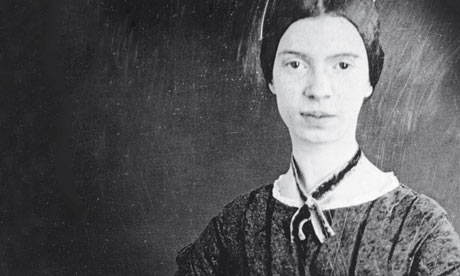About the Poet: Emily Dickinson was born on 10 December, 1830 in Amherst, Massachusetts. She seldom spent her time outside home and her closest associates were her sister Lavinia, her brother Austin and the Reverend Charles Wadsworth, who she met on a trip to Philadelphia. Dickinson was fond of a metaphysical poetry writing style and has been labelled as one of the pioneers of a uniquely American poet voice along with her contemporary Walt Whitman. She passed away in Amherst in 1886, and most of her work, all in all forty bound volumes of her poetry was sold in her name posthumously. Here,
This poem by Emily Dickinson essentially describes her suffering, pain, and loss through the winter and the change in season to Spring. While people generally prefer Spring, Emily is seen to be drawn and attached to winter and the cold weather. This is mainly due to her feelings of loss, suffering and the emotional state of her mind. Throughout the poem, all the words related to nature and spring begin with a capital letter signifying the emphasis she has laid on the onset of Spring. She is said to have associated the season with the loss of a loved one, therefore, despising the whole season as it arrives every year without fail.
Though she is accustomed to the pain that arrives with the season she cannot help but hope for the winter to prolong and the Springs not to arrive. Every aspect of nature related to springs, like the flowers, robin, bees, and grass have been devised to be perceived as pain bringers, unlike the other poets who talk about nature in the positive light. This poem sheds light on the personal sphere of Emily’s life and shows the reader in a subtle manner, the ongoing life events at the time the poem was written. Nature has been used in order to express the grief and suffering of Emily Dickinson.
Rhyme Scheme in I Dreaded That First Robin, So
Rhyming as a literary device has been used only in the last stanza with the words, ‘Plumes’ and ‘Drums’ on order to give a dramatic end to the progression.
I Dreaded That First Robin, So Tone
The tone of the poem includes a sense of melancholy with despise as she despises the spring as it brings in emotions of loss and pain stronger than ever.
I Dreaded That First Robin, So Themes
Themes covered in the poem: Suffering, Loss, Pain, Death, Nature
Suffering : The theme of suffering has been expressed throughout the poem in subtle manner where the poet has described her like of seclusion when she does not want the bees to arrive. The main part where suffering has been emphasized is when she calls herself the “Queen of Calvary” trying to draw a parallel between her suffering and that of Mother Mary’s.
Loss, Pain, and Death: These themes are interlinked in the poem. She signifies the onset of Spring with the onset of emotions that are triggered by the season. Pain is something that she has dealt with for a very long time. That leads her to seclusion which further elevates her feelings of melancholy. Few scholars suggest that death is not a theme at all in the poem while some say that this poem is centered around the death of her loved one which led to this poem. I feel death as a theme has been expressed in the poem though various small nuances.
Nature: Nature has been perceived and showcased in a different light in this poem by Emily Dickinson. She has attached negative emotions to some aspects of nature that are largely perceived as positive and beautiful. Through personal history and experiences, the poet has looked at nature from a different perspective and outlook than the others.
Some online learning platforms provide certifications, while others are designed to simply grow your skills in your personal and professional life. Including Masterclass and Coursera, here are our recommendations for the best online learning platforms you can sign up for today.
The 7 Best Online Learning Platforms of 2022
- Best Overall: Coursera
- Best for Niche Topics: Udemy
- Best for Creative Fields: Skillshare
- Best for Celebrity Lessons: MasterClass
- Best for STEM: EdX
- Best for Career Building: Udacity
- Best for Data Learning: Pluralsight















